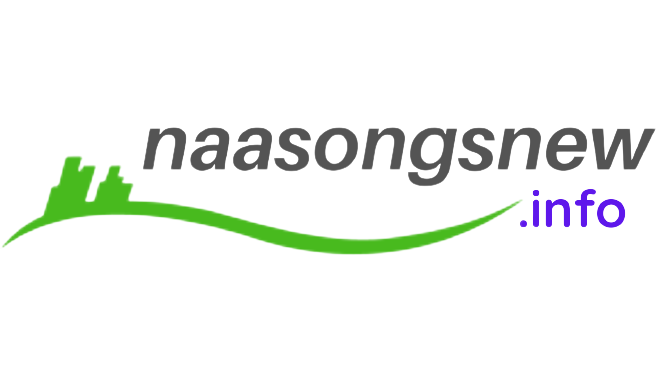In recent years, remote work has become increasingly popular, and the trend has only accelerated in the wake of the COVID-19 pandemic. While remote work offers many benefits such as flexibility, reduced commute times, and increased productivity, it also comes with its own unique set of challenges.
One of the most significant challenges of remote work is communication. Without the ability to meet face-to-face, it can be difficult to stay connected and collaborate effectively with team members. Fortunately, messaging platforms like Clariti, Slack, Microsoft Teams have emerged as powerful tools to help remote workers stay in touch and work together seamlessly.
In this blog, we’ll explore how you can use messaging platforms to master remote work. We’ll cover everything from setting up your messaging platform to best practices for communication and collaboration. By the end of this blog, you’ll have the knowledge and tools you need to thrive as a remote worker and stay connected with your team, no matter where you are in the world.
- Use messaging platforms to keep in touch with your team
Collaboration tools-cum-messaging platforms like Clariti can help you stay connected with your team, even when you’re not in the same location. According to a survey by Buffer, 99% of remote workers use instant messaging tools to communicate with their colleagues. By using messaging platforms, you can send quick messages, ask questions, and get immediate responses, which can help you stay productive and connected to your team.
- Set up a communication schedule
Establish a routine for checking in with your team, and use messaging platforms to schedule regular check-ins. According to a study by Owl Labs, remote workers who have regular check-ins with their team feel more connected and less isolated. By scheduling regular check-ins, you can ensure that you stay connected with your team and that everyone is on the same page.
- Use voice calling for team meetings
Messaging platforms like Clariti offer voice calling conferencing tools that can be used for team meetings.
- Use to share updates
Messaging platforms can be used to share updates on projects, deadlines, and other important information. According to a study, 72% of remote workers say that messaging platforms help them stay up-to-date on projects. By using messaging platforms to share updates, you can keep your team informed and help everyone stay on track.
- Use for brainstorming sessions
Messaging platforms can be used for brainstorming sessions, allowing team members to share ideas and collaborate in real-time. According to a study, teams that use the platform for brainstorming sessions report feeling more productive and creative. By using messaging platforms for brainstorming sessions, you can encourage collaboration and creativity among your team members.
- Use to share files
Messaging platforms can be used to share files, allowing team members to access important documents and information from anywhere. According to a study by Dropbox, 84% of remote workers use cloud-based storage tools to share files with their team. By using messaging platforms to share files, you can ensure that everyone has access to the information they need to do their job.
- Use for project management
Some messaging platforms can be used for project management, allowing team members to track progress and collaborate on tasks. According to a study by Wrike, 85% of remote workers use project management tools to stay organized and focused. By using messaging platforms for project management, you can ensure that everyone is working towards the same goals and that projects are completed on time.
- Use for virtual watercooler chats
Messaging platforms can be used for virtual watercooler chats, allowing team members to connect and socialize in a casual setting. According to a study by Harvard Business Review, virtual watercooler chats can help remote workers feel more connected and reduce feelings of isolation. By using messaging platforms for virtual watercooler chats, you can help your team feel more connected and foster a sense of community.
- Use for one-on-one meetings
Messaging platforms can be used for one-on-one meetings, allowing team members to connect with their managers or colleagues. According to a study by Zoom, 82% of remote workers feel more connected to their manager when they have regular one-on-one meetings. By using messaging platforms for one-on-one meetings, you can ensure that everyone has the opportunity to connect and discuss important topics.
- Use to celebrate achievements
Messaging platforms can be used to celebrate achievements, allowing team members to recognize each other’s successes and build a positive team culture. According to a study by CultureIQ, teams that celebrate achievements have higher levels of engagement and productivity. By using messaging platforms to celebrate achievements, you can build a positive team culture and motivate your team members.
- Use for onboarding
Messaging platforms can be used for onboarding new hires, allowing them to connect with their team and get up to speed quickly. According to a study by Remote.co, 79% of remote workers say that onboarding is a challenge. By using messaging platforms for onboarding, you can help new hires feel welcome and integrated into the team.
- Use to provide feedback
Messaging platforms can be used to provide feedback to team members, allowing them to improve their skills and performance. According to a study by Gallup, remote workers who receive regular feedback are more engaged and productive. By using messaging platforms to provide feedback, you can help your team members grow and develop in their roles.
- Use for training
Messaging platforms can be used for training, allowing team members to learn new skills and stay up to date on industry trends. According to a study by LinkedIn, 58% of remote workers say that access to learning and development opportunities is important to them. By using messaging platforms for training, you can help your team members improve their skills and stay engaged in their work.
- Use to manage time zones
Messaging platforms can be used to manage time zones, allowing team members in different locations to collaborate effectively. According to a study by HubSpot, 77% of remote workers say that time zones are a challenge. By using messaging platforms to manage time zones, you can ensure that everyone is aware of the time difference and can plan their work accordingly.
- Use for work-life balance
Messaging platforms can be used to promote work-life balance, allowing team members to set boundaries and avoid burnout. According to a study by Owl Labs, 44% of remote workers say that maintaining work-life balance is a challenge. By using messaging platforms to promote work-life balance, you can help your team members stay healthy and productive.
Conclusion
Mastering remote work with messaging platforms is an essential skill for any remote team. By using messaging platforms effectively, you can improve communication, collaboration, and productivity. From setting clear expectations to promoting work-life balance, there are many ways to use messaging platforms to enhance remote work.
Remote work is becoming increasingly common, and it’s important for teams to have the tools and strategies to succeed in this new era of work. By utilizing messaging platforms, remote teams can stay connected and engaged, no matter where they are in the world.
As technology continues to advance, messaging platforms will only become more important for remote teams. By mastering these platforms, remote teams can stay ahead of the curve and achieve their goals, no matter where they are located. So, start implementing these tips today and take your remote team to the next level!
 Naa Songs
Naa Songs





